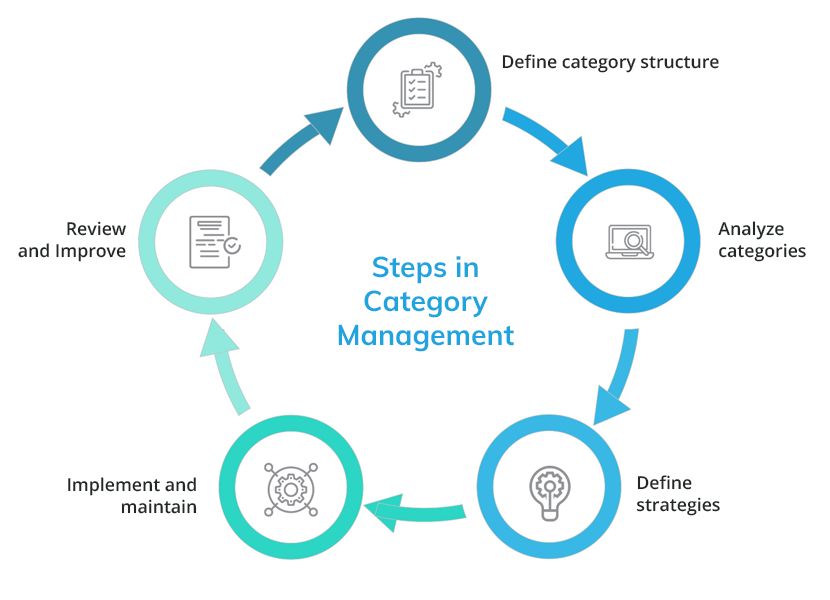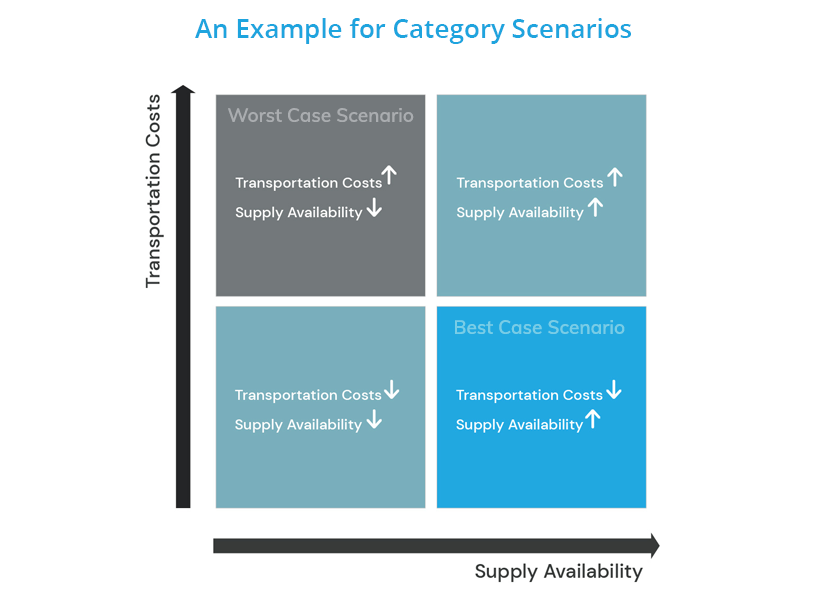
The procurement function is evolving from a transactional to strategic role and category management is a critical business process that can help sourcing professionals deliver strategic value to their organisation. Yet, it still turns out to be one of the most overlooked areas in procurement and only a minority of enterprises leverage a category management framework to fine-tune their procurement operations.
Although the concepts of reviewing category and supplier strategies have evolved in the past few years, the concept of category management is relatively nascent and is evolving quite rapidly. Even in some of the bigger, more progressive procurement teams, category management isn’t leveraged to its maximum potential. There are many different reasons for this – lack of understanding of category management, how and where to start, insufficient skills to execute category strategy, lack of data and information to build category strategy and so on.
According to futurepurchasing’s global category management survey 2021, “56% of respondents said they have a formal plan for adopting category management. But, only 23% said they have sufficient financial investment to deliver their expectations and for a significant proportion of organisations, their efforts to implement category management are likely to fail because of a lack of resource, support, systems or engagement.”
In this blog, I will be touching upon some basics of category management and how you can progress your category management journey and make it smoother by getting a few key enablers right.
What is Category Management and why do you need it?
The concept of category management in procurement is quite simple – segmenting various goods and services an organisation needs to source, with a view to organise and standardise procurement activities based on that segmentation. Sounds simple enough right? But, sadly, implementing category management is not that easy and it is often an area where many procurement organisations still struggle.
Procurement professionals who read this definition here of category management might argue that this is what they have been doing for ages – understanding markets and looking for ways to identify opportunities for consolidation and striking good deals.
However, organising your spend in categories to enable opportunities for consolidation is not what category management is all about. What category management as an organisational process brings to the table is much more. The most important thing in category management is the business alignment with the category management strategy. The segmentation we spoke about earlier, must be aligned with the broader objectives of the organisation.
A category management approach enables you to build a procurement function that aligns seamlessly with the goals and objectives of the larger business. Understanding what your C suite executives really want is the first step in implementing category management – cost reduction, risk reduction, revenue enhancement, sustainability, local economic development and so on. Every CPO must understand and work to these objectives along with other competitive imperatives in sourcing such as supplier innovation and speed of sourcing while defining category strategies.
The aim of category management is to provide a deeper understanding of the market, products, suppliers and the supply chain to develop strategic category plans. This helps in better aligning supplier relationships in alignment with the corporate objectives. It transforms the long-term value achieved from procurement and drives reduced costs and risks, improved quality, revenue, stakeholder satisfaction, with better supplier relationships and ultimately better business performance.
How to get started with Category Management?
Category Management process is not one-size-fits all. It must be adapted based on industry specific categories, business needs and so on. However, at its core, category management is about conducting continual analysis to understand the demand structure for goods and services used by the organisation, prioritise them appropriately, optimise and adjust processes based on trends, risks, demands or supply changes to maintain alignment with business strategy and deliver value. Success in category management requires you to have an insights-driven approach to building relationships with different stakeholders and collaborate with them to build a multi-year strategic roadmap tied to the needs of the business.

The basic steps in category management can be summarised as below.
- Define Category Structure: To start with, based on the overreaching strategic vision, you need to establish an initial list of spend categories for consideration. Procurement will need to profile each category based on an examination of current spend, existing supplier contracts and relationships, forecast demands, market intelligence and directional input from stakeholders to identify how this segmentation aligns with business objectives.
- Analyse: On a category-by-category basis, category managers need to dig deeper to identify opportunities through macro analysis, trend analysis, market analysis, cost structure analysis, category positioning, and SWOT analysis. You might be already doing this at a sourcing project level. But it is far more effective if done on a category level.
- Define Strategy: Once this analysis is done for the categories, you can outline the next steps and define your approach to handling a category keeping in mind in-place contracts, projected demand and business needs. The category strategy includes more than selecting vendors and can guide other innovative alternatives such as make-or-buy decisions, developing partnerships with suppliers, involving suppliers in co-innovations and product designing and so on.
There are several valuable frameworks for developing category strategy like
- the Krajilic portfolio matrix, which classifies categories based on the level of supply complexity, the supplier preferencing matrix developed from the suppliers’ point of view to determine the value of the buyer’s business,
- the Dutch windmill model combining the krajilix and supplier preference matrices,
- the Kearney strategy chessboard matrix incorporating demand power and supply powers, and so on.
Remember that that the category strategy should align with the ‘big picture’ business goals.
- Implement and Maintain: Once you have the individual categories profiled and analyzed, procurement must make clear how they are going to execute the agreed upon strategies. Each category will have its own strategy and objectives. It’s time to implement the strategies now. This would involve activities like creating a to-be supplier portfolio for evaluating and comparing potential suppliers for each category, defining KPIs for managing and tracking supplier success, evaluating risks in the supply chain for each category and so on.
- Review and Improve – Your business needs will keep evolving and so should your category management strategies, along with it. Hence, your categories should be reviewed at regular intervals to ensure that categories are always relevant and keeping up with the overall business goals. If you don’t evolve with the changes in your business, you will end up with an ineffective and outdated category management strategy that will be of no good to the organisation.
Bringing Agility to Category Management
Organisations that have already implemented category strategies and are following the above steps must constantly look at ways to improve category strategy processes. Most organisations usually rely on an annual approach to category planning where three elements of category intelligence — current spend profile, market dynamics and business priorities are evaluated during annual category planning meetings and become the basis of all strategic decisions.
But, what happens to the strategies when disruptions happen – such as natural disasters, major technological advancements or new regulations? When the normal trajectories of cost, risk and growth trends within a category are disrupted due to unforeseen events, the annual category intelligence becomes outdated and category strategies fail.
To bring agility to their category management process, procurement leaders need can adopt a framework using scenario planning to create better category strategies that anticipate and prepare for disruptive change. For developing category scenarios and planning scenario category strategies Gartner recommends adopting the following steps:
- Identify external driving forces – To create effective category scenarios, the most critical external driving forces must be identified and evaluated. There are three types of external driving forces affecting category strategy: external drivers of cost, risk and growth. Some of the typical examples for external driving forces are number of suppliers, supplier/demand pressure, labor costs, supply availability, financial stability of suppliers, geopolitical forces, supply substitutes, technological breakthroughs, etc. To identify applicable driving forces for their category, managers should ask: “Does this driver shape cost, risk or growth trends within my category?” and document the answer for each factor.
- Document critical uncertainties – Critical uncertainties are driving forces with a high impact on category strategy, but the future trajectory of the force is unpredictable. Because a change in direction to this external force would be critical to strategy — but since whether and how that change manifests is uncertain — it makes an ideal external driving force on which to center a scenario plan.
- Develop a scenario planning framework – Based on the direction of external driving forces and uncertainties documented, procurement leaders can develop hypothetical category scenarios and plan strategies for each scenario. While creating more scenarios may appear to be a good idea initially, it exponentially increases the time, energy and resources needed to allocate toward planning, which results in diminishing returns. So, it is important for managers to limit the number of scenarios created to those that are truly the highest impact and most uncertain.
An easy way of developing category scenarios is to plot two critical uncertainties as the axis of the quadrant chart. It is important to note that the critical uncertainties used as the axes in quadrant charts should be mutually exclusive to ensure each quadrant results in four distinct scenarios. Choosing mutually exclusive ones by picking external driving forces from different drivers (cost, risk and growth), can ensure this doesn’t happen.

- Monitor Unfolding Scenarios – Once scenario-specific plans are documented, leading indicators that signal a scenario may be unfolding must be monitored so that scenario plans can be enacted quickly.
Enablers of Category Management
We have seen the steps for category management now. But, before you kick start your category management journey, it is quite important to get a few key enablers right, so that you are not left at sea.
- Stakeholder Collaboration – Procurement working in silos can never succeed in category management. Instead, procurement needs to work with stakeholders – the C suite, people who will be using the items in a category, etc. to understand their objectives. Only then can you get real actionable insights to define and execute category strategies that are efficient and effective and can add the most value to the organisation.
- Category Knowledge and Data – Data and analytics are your best friends in category management. It is critical to derive insights from the information available about each category to execute category management efficiently. Relevant and clean data coupled with analytics can enhance visibility and enable performance tracking.
Thanks to modern procurement and source to pay and strategic sourcing technologies, it is not possible to access such insights at near real-time. These solutions make available all your spend information in a single platform and enhance collaboration across the organisation. Although, most of the strategic sourcing solutions are in the very early stages of innovation in the category management area, a few vendors currently provide a dedicated category management module with the ability to create and manage category strategies effectively using a central dashboard bringing together the status of suppliers, contracts, spend, performance, and savings. These solutions allow category managers to get the big picture view to establish and maintain their strategies easily without losing track of any important metrics.
- Talent – Last, but not the least without the right skills you cannot execute category management. Yes, of course technology is essential and can help you a lot in getting things right, but a great degree of insights will always be required from a human perspective. Current technology just becomes a source of prompt and provide insights for category managers to act optimally. There is still a long way to go for technology to replace humans in contextualisation and execution of category management.
To wrap-up, management of spend, suppliers and contracts at the category level enables you to align your sourcing goals with the priorities and objectives of the business and deliver long-term value. It is an art and science, if implemented right has the potential to deliver several benefits such as greater efficiency across the supply chain, enhanced collaborations, reduced supply chain risk, better planning, cost reductions, and identification of opportunities to innovate.
Do share your feedback and comments – where are you in your category management journey? What are your next steps in the execution of category management in your teams?
About Author

Kumar Mallampalli, Partner and Co-founder, RheinBrücke
Partner and co-founder at RheinBrücke, a European company, offering a Strategic Sourcing solution, MeRLIN. He is the Chief Evangelist for MeRLIN and heads Product Strategy & Research, Product Marketing, Analyst Relations and Knowledge Management,
Kumar has three decades of experience and expertise across various enterprise domains like Products, Consulting, Program Management, Marketing and Business Intelligence across industries. He has headed multiple organisations delivering solutions for Enterprise Management, Sourcing and Procurement, Collaboration and Product Development globally. He is a passionate writer and speaker who talks about digital transformation, strategic sourcing, procurement transformation and startups.
About RheinBrücke’s MeRLIN
MeRLIN is a Sourcing Solution that offers a seamlessly integrated sourcing process automation with supplier relationship management and planning functions augmented by advanced analytics functions. The intuitive, modular, flexible, configurable and easy to deploy platform plays a key role in enhancing collaboration between buyers and suppliers.
Website: www.merlinsourcing.com

